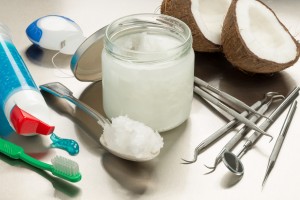 If you’ve never heard of oil pulling before, you may think it has something to do with extracting crude from the ground. In fact, it has nothing to do with taking petroleum from the earth. Oil pulling is a natural dental health practice that can help remove bacteria from your gums and between your teeth. It’s an ancient practice that has seen a resurgence in popularity in recent years.
If you’ve never heard of oil pulling before, you may think it has something to do with extracting crude from the ground. In fact, it has nothing to do with taking petroleum from the earth. Oil pulling is a natural dental health practice that can help remove bacteria from your gums and between your teeth. It’s an ancient practice that has seen a resurgence in popularity in recent years.
The History of Oil Pulling
Oil pulling, also known as oil swishing, originates in Ayurvedic medicine and dates back 3,000 years. It was used to treat imbalances in the body. Ayurvedic literature described sesame oil as being used as a preventative and to relieve mouth dryness as well as inflammation. Sunflower oil and coconut oil were also used. In oil pulling, a tablespoon of oil is pushed, pulled and sucked through the teeth for about 20 minutes. The oil acts as a magnet to pick up microbes from every crack and crevice between the teeth and in the gums.
Coconut Oil for Oil Pulling
Today, the most common oil used for oil pulling is coconut oil. This is because 50% of coconut oil’s fat is made from lauric acid, which has powerful antimicrobial properties. It will inhibit streptococcus mutans, the main bacteria that causes tooth decay. Microorganisms in the mouth have a fatty membrane around a single cell, and when these cells meet up with oil, which is a fat, they adhere to each other. That’s what makes oil so effective for removing mouth bacteria.
Benefits of Oil Pulling
There are several benefits of oil pulling. It’s an inexpensive and natural way to greatly reduce the bacteria in the mouth. If you don’t like the harsh chemicals commonly found in commercial mouthwashes, oil pulling is a smart alternative. Since oil pulling can reduce bacteria, this may reduce your chance of developing gingivitis, gum disease and tooth decay. Also, bacteria from the mouth can have serious effects if it enters other parts of the body. For example, a bacterial infection may be the cause of heart disease, and bacteria can adversely affect a pregnancy. There are studies that suggest there may be a link between mouth bacteria and various diseases like meningitis, sinusitis and pneumonia. There are many great reasons to practice oil pulling — not just for healthy gums and teeth, but for good health overall.
Instructions for Oil Pulling
Here are some tips for successful oil pulling:
- Don’t overdo it! Swish the oil around gently. If your jaw hurts, you’re working it too hard.
- Do not swallow the oil. If it’s difficult not to do this, you’re probably using too much. Use a smaller amount.
- Spend about 20 minutes pushing, pulling and working the oil around and through your teeth.
- When you’re finishing, spit the oil solution into the trash. Don’t spit it into the sink or toilet, because the thick oil can build up over time and clog your pipes.
- Give your mouth a thorough rinsing with water immediately afterwards before drinking anything.
Oil Pulling and Proper Dental Hygiene
If you’d like to try oil pulling as part of your daily dental hygiene, you should know that it can’t replace brushing, flossing and regular trips to the dentist. However, as a natural preventative and to help guard against gum disease, it’s an effective therapy. Enjoy your fresh, clean mouth!







Leave a Reply